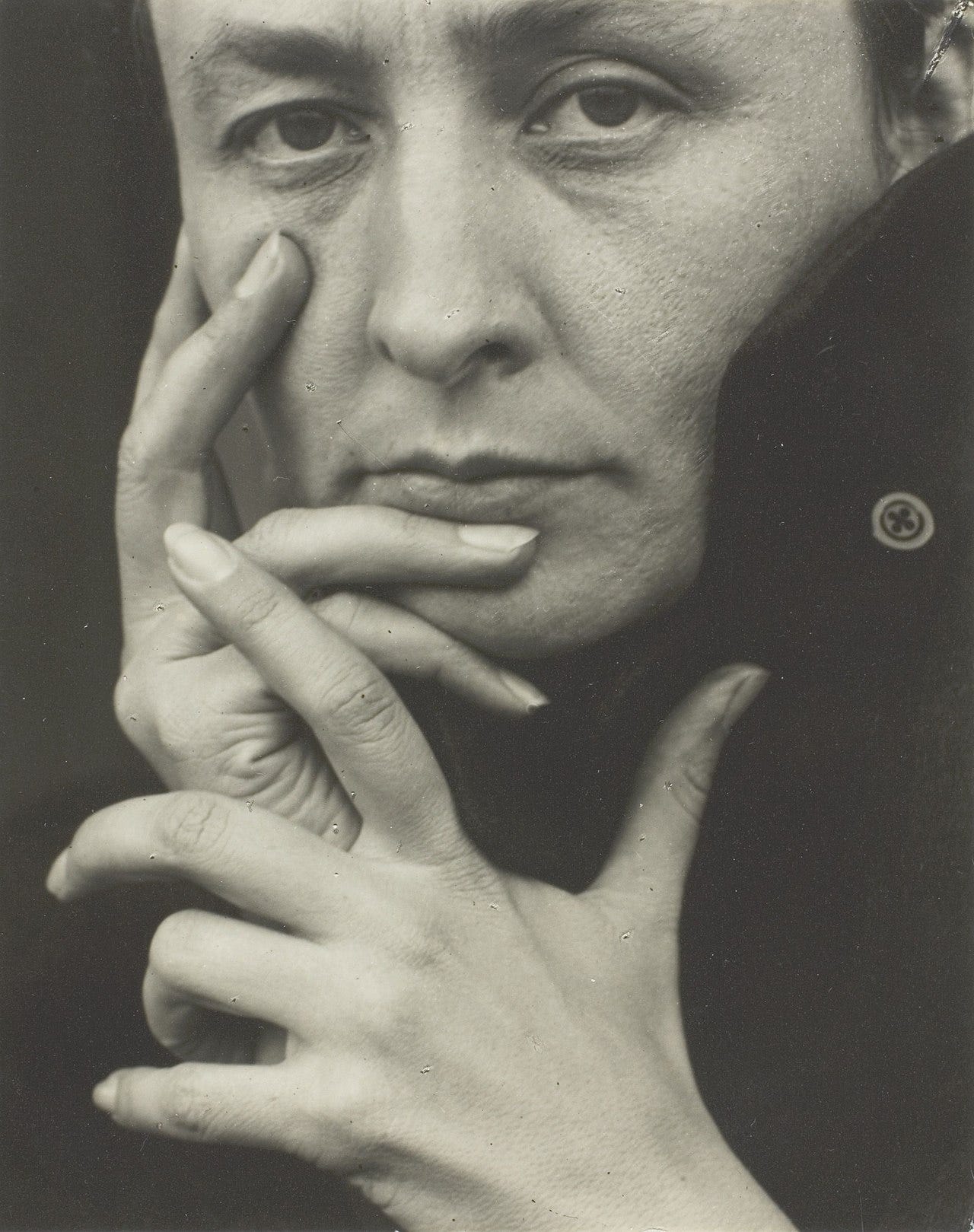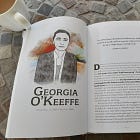Art for Thought: Georgia O'Keeffe's 1918 Painting "The Flag"
The Flag represented not just the usually apolitical artist's political beliefs, but her fear, anxiety, and depression, emotions which mirrored those of the country at large.
I’m a wordy person. I like longform writing. I like rambling on sentences. And even when writing a book, I tend to go on at length. So, it’s of little surprise that there were a lot of things in the draft of my book The Artist’s Mind: The Creative Lives and Mental Health of Famous Artists that ended up getting discarded before the final draft was published.
For several of the artists I covered, I had included an “art for thought” section, looking a little more closely at one specific work by the artist through a mental health lens. These pieces didn’t make the final cut. So, I want to share them with you here. Today, we’re looking at one by Georgia O’Keeffe: The Flag.
The Flag (1918) is a painting from O’Keeffe’s body of work many might not recognize. O’Keeffe was teaching in remote areas in Texas and South Carolina at the time of its creation, places where she thrived. However, the nation was embroiled in World War I and she couldn’t escape the turmoil. Usually apolitical, she had been aghast when her 25-year-old brother Alexius signed up for the Officer Corps of Engineers, among the first group expected to go to France to fight. Although she had always enjoyed her teaching positions, she was sometimes criticized by peers and administrators for being less conservative than her peers (cavorting with men and not attending church were some examples they wielded against her.) So, when O’Keeffe voiced opposition to excessive military actions, she found herself facing some tension from those around her.
By the fall of 1917, the year America entered the war, O’Keeffe was not just disillusioned, but also depressed. Then, in early 1918, she succumbed to the influenza pandemic. During this time, with frail health and after a three month hiatus from painting, she suddenly felt compelled to paint again. All of her anxiety about her brother going off to war, and all of her frustration with the patriotic peers in that small Texas town, merged together and flowed out of her into The Flag. World War I was the first time that people experienced devastating new weapons like combat airplanes, machine guns, and mustard gas, and the world was anxious about the violence these tools would cause. Collective anxiety fuels and exacerbates individual anxiety, and O’Keeffe was a victim of this dynamic. Incidentally, her worries weren’t without reason - her brother was attacked with mustard gas and ultimately died from its effects. The Flag represented not just her political beliefs, but her fear, anxiety, and depression, which mirrored that of the country at large.
Author Roxana Robinson describes the painting as a
“...drooping flag against a starless, darkening sky. The flag flutters limply, stripped of its stars and stripes; its only color, and that of the pole, is blood red.”
‘Drooping,’ ‘dark,’ ‘limp,’ ‘stripped’ of color - these are all adjectives that could describe depression as well as they describe the painting. In 1917, as her own personal experience of depression was creeping up on O’Keeffe, she even went so far as to muse, “What’s the use of Art - if there is war?”
Ultimately, O’Keeffe was once again moved to create art, though. In December 1917, she wrote,
“I didn’t want to come home - but I feel as though I have lots to do - lots - and one thing to paint - It’s the flag as I see it floating - A dark red flag - trembling in the wind like my lips when I’m about to cry.”
She goes on to note that her chest is sore and she is tired, early signs of the influenza that would soon be diagnosed. Though she felt compelled to make the painting, she was fatigued and struggled for inspiration, writing to Stieglitz that “...the American flag lost its meaning for me.” She wondered if perhaps the patriotism she felt when she was younger was going to be “reborn these days for the country and large,” and then adds, “And perhaps art too is about to be born for this country.”
It’s an interesting statement, an observation that the world was going through a traumatic change, and that art might change right along with it. As Amy Von Lintel observes,
“The amorphousness of this flag, and its lack of being a clear or single universal response to war, are precisely what makes the work such a powerful statement of US wartime identity.”
It could be said that The Flag is indicative of O’Keeffe’s conflicted identity within that historical context, as well.
So, what I see here is a combination of interesting themes:
In depression and other ill health, even the most creative artists sometimes feel like it is impossible to create, perhaps even futile to try.
And yet, they often eventually emerge from that feeling and use art to process their experiences and emotions.
Individual depression, anxiety, and trauma are often layered within collective depression, anxiety, and trauma. Artists express what others may also be feeling.
If you read this far, perhaps you liked the work. The work does take work. It only continues with support, so please consider subscribing. My annual rate starts at $10 per year.
Quote sources for this article:
Roxana Robinson, Georgia O'Keeffe: a Life
Georgia O'Keeffe and Amy Von Lintel, Georgia O'Keeffe's Wartime Texas Letters
Georgia O'Keeffe and Alfred Stieglitz, My Faraway One. Selected Letters of Georgia O'Keeffe and Alfred Stieglitz, ed. Sarah Greenough









I majored in painting in school, and studied a fair bit of art history, but this O'Keefe painting is new to me, and I like it very much. I also tend to agree with your analysis, and can only imagine her tensions that went into this work.
Thank you Kathryn. Your post captures the essence of how personal struggles, like depression and anxiety, can be intertwined with broader societal issues. It's a poignant reminder of the power of art to reflect and transcend our collective experiences.